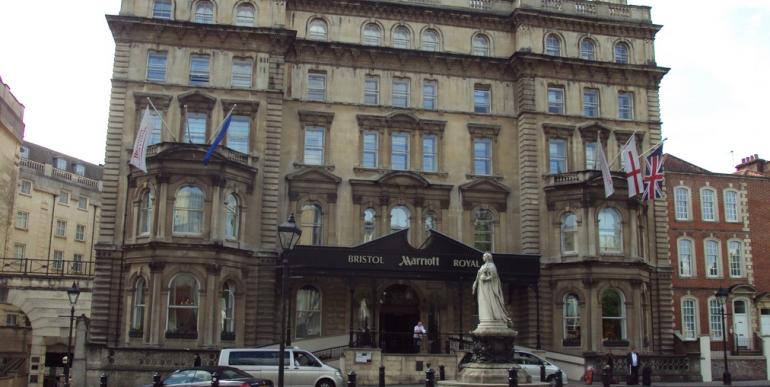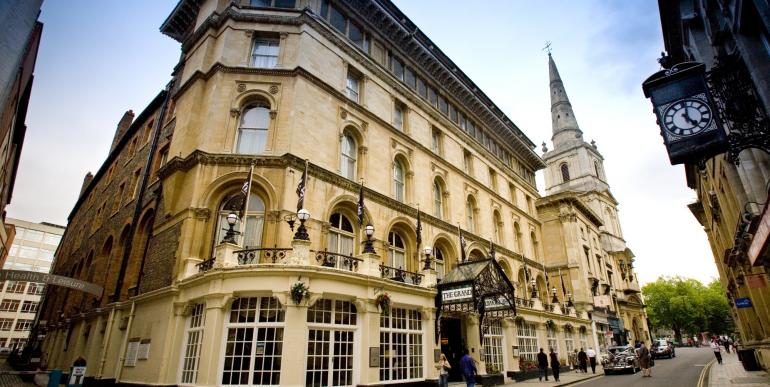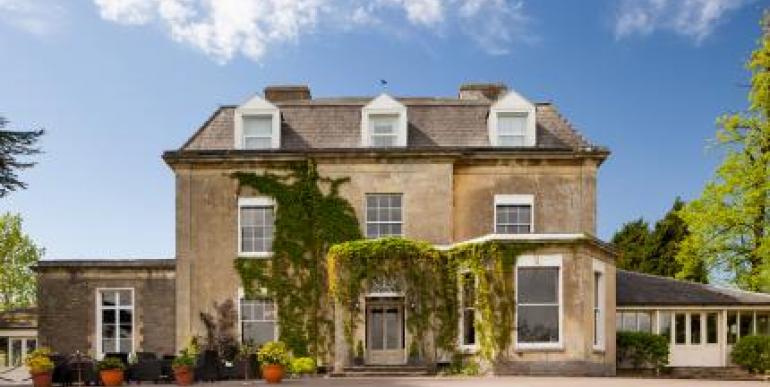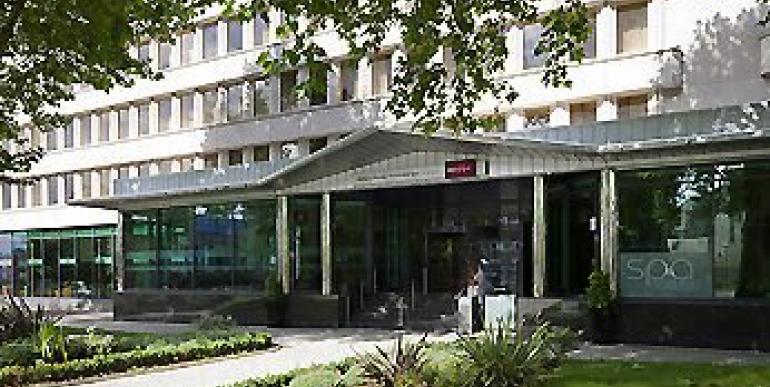The county of Somerset is best known for its rolling hills, strong cider and its seaside resorts. It is a mainly rural county with good links to the M4 and M5 motorways. To its north is the cities of Bristol and Bath. In the south, Yeovil is minutes away from Dorset.
Just north of the traditional Somerset boundary is the city of Bristol, formerly in Avon and Gloucestershire before then. By the 15th century, it had the second most important port in Britain, which led to the city's rising prosperity. After being an important trading post, it became an important engineering centre, particularly aviation. It is famous for its creative industries, has a number of museums commemorating its maritime heritage and excellent shopping facilities. It also has unique conference venues in the form of 'The Old Station', once part of Bristol Temple Meads railway station.
East of Bristol is the historical city of Bath. It is a UNESCO World Heritage Site with landmarks including Bath Abbey, its Roman Baths, Pulteney Bridge, and The Royal Crescent. The Thermae Bath Spa enables visitors to take the warm spa waters, having reopened in 2006. There is five theatres and numerous art galleries. The city hosts regular festivals, including the Bath Chilli Festival. As inspiring conference venues go, Bath well and truly fits the bill with its historical setting.
Somerset's main seaside resorts are in Minehead and Weston-super-Mare, with Watchet Burnham-on-Sea and Clevedon being smaller resorts. Minehead is the most westerly resort, near the Exmoor Heritage Coast. It is the terminus of the West Somerset Railway - the UK's longest preserved line. Watchet is famous for its marina, whereas Burnham-on-Sea is famed for both its lighthouses and having the UK's shortest pier.
Somerset's most bustling resort is Weston-super-Mare. Its sands and, the recently renovated, Grand Pier attracts day trippers and holidaymakers far and wide. Live performance and conference venues include The Playhouse and The Winter Gardens. Further up, the quieter resort of Clevedon is dominated by its restored pier. It is also a landing stage for steamers.
Further inland, Somerset's natural features include the Mendip, Quantock and Blackdown Hills. The Blackdown Hills share boundaries with Devon, close to Taunton, Tiverton and Yeovil. Towards Bridgwater and Taunton is the Quantock Hills, which comprise of heathland, oak woodlands and agricultural land. Somerset's most northerly hills are the Mendip Hills, which are limestone hills known for its caves and outdoor sports activities.
Other features of the Mendip Hills include Cheddar Gorge. As well as its cliffs, there's a number of show caves. Gough's Cave has the UK's largest underground river system, the Cheddar Yeo. Its most celebrated and visited show cave is Wookey Hole, navigable by boat. There is also a hotel nearby, plus a wealth of other attractions including a Victorian Penny Arcade, Cave Museum and a crazy golf course.
Near Wookey Hole is Wells, often described as the smallest city in England. Its 12th century cathedral draws many visitors to the city, with distinguishing features including The Liberty of St. Andrew, a walled precinct. Close by is Glastonbury, which for many people is famous for its annual music festival. It is a place of pilgrimage for New Age Worshippers and has been inhabited since Neolithic times. Looking out to the town centre, topped by the remains of St. Michael's Church is Glastonbury Tor.
The market town of Shepton Mallet is another good starting point for the Mendip hills. It is an important centre for cider production and the nearest town to the Glastonbury Festival venue. Close by is the Royal Bath and West of England Society showground. A few miles away are the towns of Bruton, Castle Cary and Evercreech. The Bruton Museum includes reference to John Steinbeck's stay in the town.
Close to the Dorset and Somerset boundary is Yeovil. Its footballing side is famed for its giantkilling feats; as a non-league side, Yeovil Town beat numerous Football League sides in the F.A. Cup, with one of its biggest scalps against Sunderland in 1949. Its other exports include helicopters, courtesy of the AgustaWestland plant. The Haynes Motor Museum, nine miles from the town centre, has over 400 cars and bikes. If you like your conference venues to be 'packed with precious metal', this is the place.
Just off the M5 motorway are two of Somerset's principal towns, Taunton and Bridgwater. Taunton is the county town home to Somerset County Cricket Club and a National Hunt racecourse. It is also one of Somerset's main shopping centres with a number of chainstores represented in and on the edge of the town centre.
Only twelve miles from Taunton is Bridgwater, on the banks of the River Parrett. Its most famous son is Admiral Robert Blake, nicknamed the 'Father of the Royal Navy'. His assumed birthplace in the town became the Blake Museum, commemorating his achievements. Other attractions include the Somerset Brick and Tile Museum.
By road, much of Somerset is a junction away from the M5 motorway, with Bristol city centre close to the M4, M5, M32, M48 and M49 motorways. Other main roads into Somerset include the A4 through Bath, the A38 via Bristol, Bridgwater and Taunton, and the A39 into Minehead. By rail, Bristol Temple Meads and Bath Spa stations are well connected with regular inter-city services to London Paddington, Swansea and Cardiff Central. Regular trains from Cornwall, Devon and Bristol call at Taunton and Yeovil Pen Mill stations.
Where history and scenery meets, Somerset has the makings of a memorable conference venue location. Whether you prefer rolling hills, the seaside or Roman Baths, this is the place.





